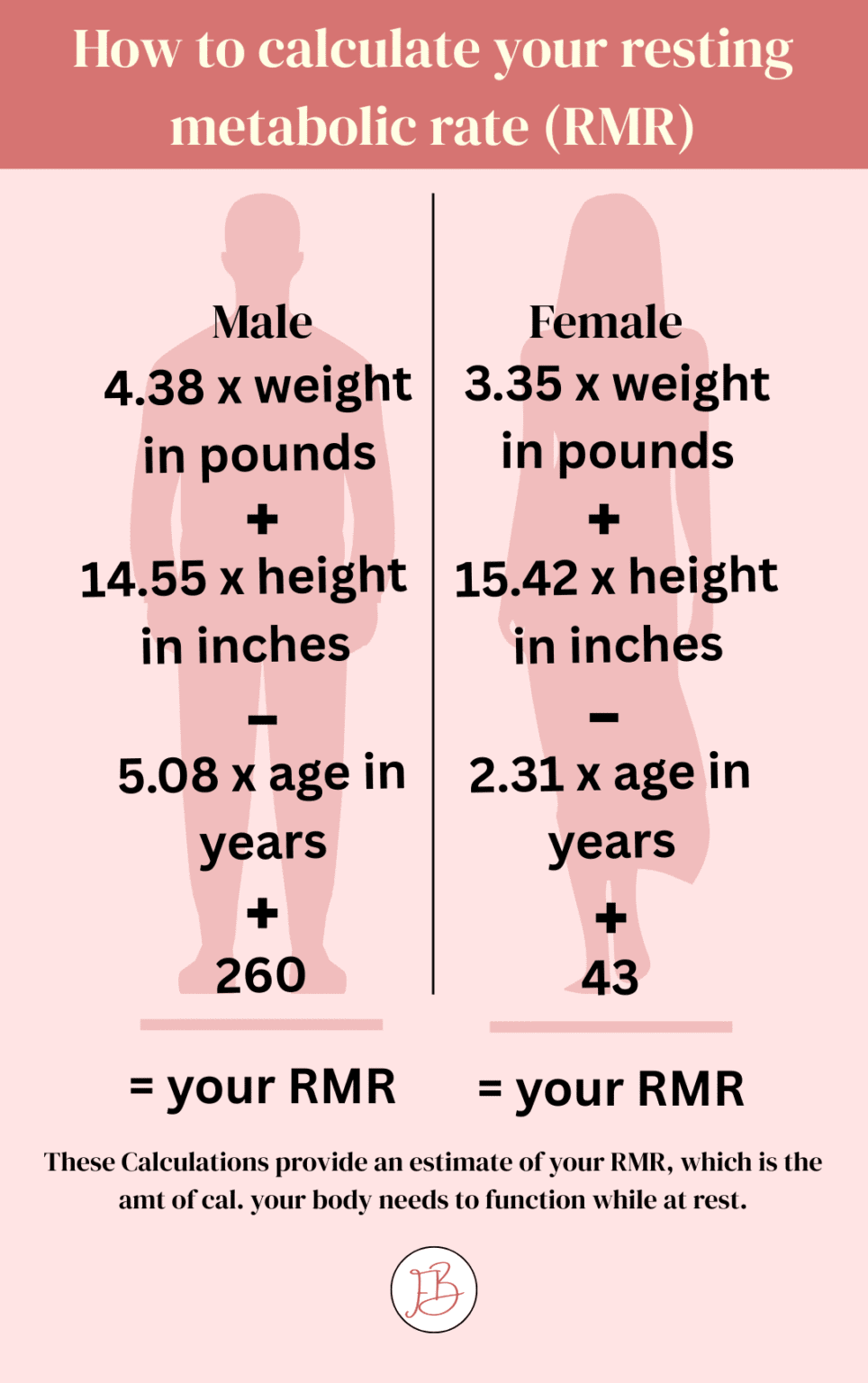
Three parts make up your body’s metabolic rate or total energy expenditure:
- Basal metabolic rate (BMR): The body requires energy (kilojoules) to maintain proper operation of all its systems, including breathing, heartbeat for blood circulation, cell growth and repair, and hormone regulation, even while at rest. The majority of your daily energy expenditure (between 50 and 80 percent) is attributed to your body’s BMR (1).
- Thermic impact of food (also called thermogenesis): Your body requires energy to absorb, transport, and store nutrients as well as to digest the food and beverages you eat. About 5–10% of your energy is used for thermogenesis (2).
- Energy utilized during physical activity: this is the energy required for movement and varies most with daily energy consumption. Physical activity include both scheduled exercise, such as running or playing sports, and any unplanned activities, such as playing with the dog, hanging out the laundry, or simply fidgeting (3).
This part accounts for 20% of our daily energy consumption based on a moderately active individual (30 to 45 minutes of moderate-intensity physical exercise per day).
Basal metabolic rate (BMR)
The homeostasis that determines your BMR must be maintained by your body. Because maintaining lean mass takes a lot of energy, your overall lean mass—especially your muscle mass—has a significant influence on your BMR. Anything that reduces lean mass lowers your BMR.
Because your BMR accounts for so much of your overall energy intake, it is critical to maintain or even enhance your lean muscle mass through exercise when attempting to shed fat.
As consuming too few kilojoules stimulates the body to slow the metabolism to preserve energy, this requires combining exercise (especially weight-bearing and resistance workouts to enhance muscle mass) with changes in diet toward healthy eating patterns.
Exercise raises your daily energy expenditure, and maintaining lean muscle mass also helps lower your risk of injury while training.
The typical woman’s daily BMR is around 5,900 kJ, whereas the average man’s is about 7,100 kJ. Although the rate of energy expenditure fluctuates during the day, it is constant. The rate of energy expenditure is often lowest in the early hours of the morning (4).

Factors that affect our BMR
A number of related variables affect your BMR, these as follows (5):
- Body Size: The more bodily tissue and cells you have, the more energy your body needs to sustain them.
- Amount of lean muscle tissue– muscle burns kilojoules rapidly.
- Amount of body fat– fat cells are ‘sluggish’ and burn far fewer kilojoules than most other tissues and organs of the body.
- Crash dieting, starving or fasting – eating too few kilojoules encourages the body to slow the metabolism to conserve energy BMR can fall by up to 15%, and this decrease worsens if lean muscle mass is also lost.
- Age– metabolism slows with age due to loss of muscle tissue, but also due to hormonal and neurological changes.
- Growth– infants and children have higher energy demands per unit of body weight due to the energy demands of growth and the extra energy needed to maintain their body temperature.
- Gender– generally, men have faster metabolisms because they tend to be larger.
- Genetic predisposition– your metabolic rate may be partly decided by your genes.
- Hormonal and nervous controls– BMR is regulated by the neurological and hormonal systems. Hormonal abnormalities can have an impact on how fast or slowly the body uses energy.
- Environmental temperature– if temperature is very low or very high, the body has to work harder to maintain its normal body temperature, which increases the BMR.
- Infection or illness– BMR increases because the body has to work harder to build new tissues and to create an immune response.
- Amount of physical activity– hard-working muscles need plenty of energy to burn. Frequent exercise trains the body to burn calories more quickly even while at rest and builds muscular growth.
- Drugs– like caffeine or nicotine, can increase the BMR.
- Dietary deficiencies– for example, a diet low in iodine reduces thyroid function and slows the metabolism.
Thermic effect of food
Because it takes energy to consume, digest, and metabolize the meal you just had, your BMR increases after eating. The rise occurs soon after you start eating, and peaks 2 to 3 hours later (6).
Depending on the meal’s size and the kinds of food consumed, this increase in BMR might be anywhere from 2% to 30%.
Different foods raise BMR by differing amounts. For example:
- Fats raise the BMR by 0 to 5%.
- Carbohydrates raise the BMR by 5 to 10%.
- Protein raise the BMR by 20 to 30%.
- Hot spicy foods containing chilli, horseradish and mustard can have a significant thermic effect.
Energy used during physical activity
During severe or vigorous physical exercise, our muscles can burn calories up to 3,000 kJ per hour. At rest, muscle energy expenditure accounts for around 20% of total energy expenditure; however, with intense exercise, this amount can rise by 50 times or more. The only type of energy expenditure over which we have control is during exercise.
However, calculating the energy used during exercise is challenging since the real figure for each individual varies depending on characteristics such as weight, age, health, and the intensity with which each activity is carried out.
(7) Department of health gave physical exercise guidelines that recommend the amount of (8) physical activity needed. It is critical for our general health that we minimize our time spent inactive (sitting or reclining) and engage in at least 30 minutes of moderate-intensity physical exercise every day.
As a rough guide: Try to do the basic workouts that fulfil the every day physical activity needs.



